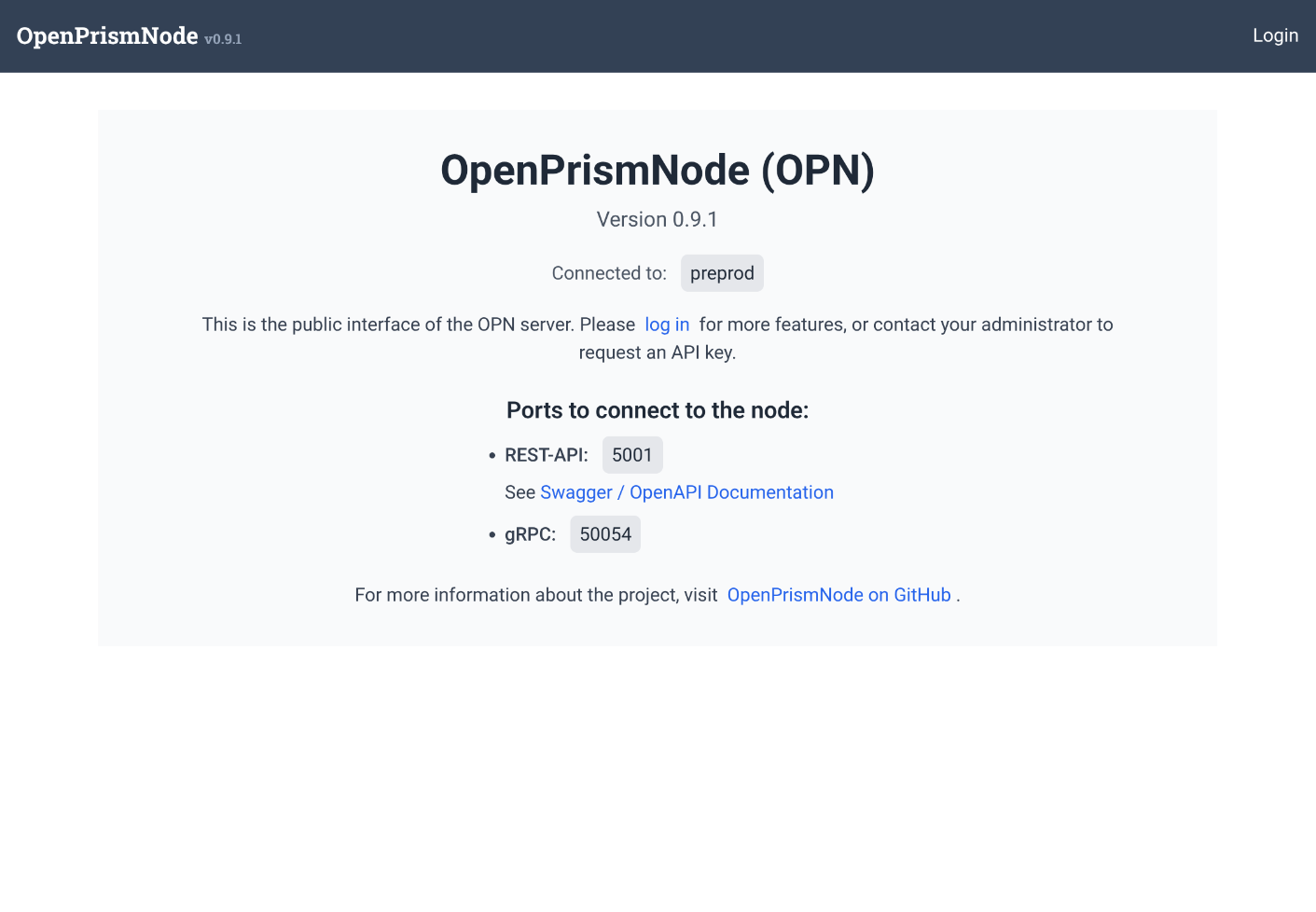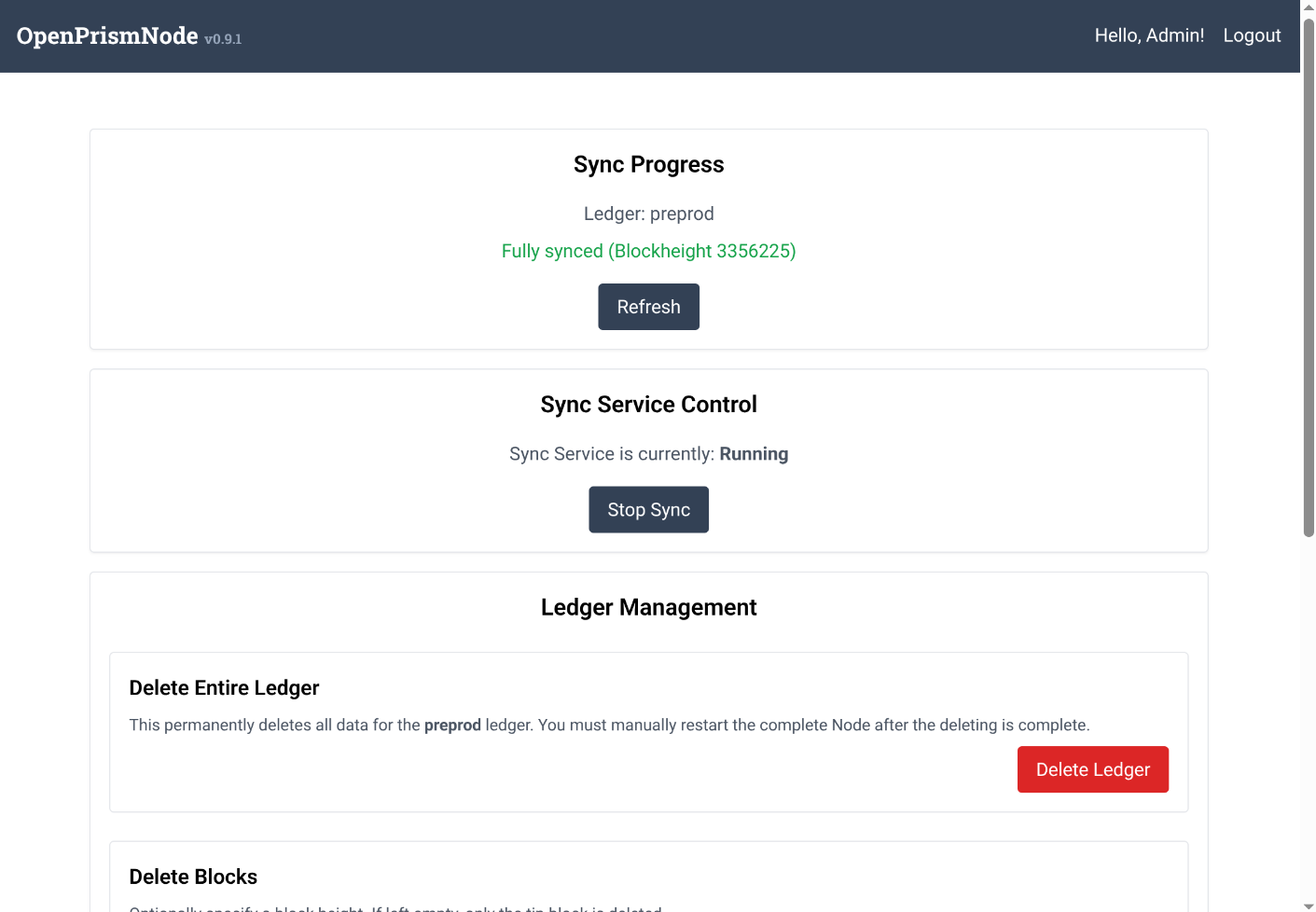Guide: Installing OPN Using the Blockfrost API for Syncing
By default, OPN (Open Prism Node) synchronizes data using dbsync as its backend database. However, if dbsync is not available or not preferred, OPN can alternatively be synced using the Blockfrost API.
⚠️ Note: This setup only applies to data synchronization. The creation and modification of DIDs still requires a Cardano Wallet and therefor a more elaborate setup. For instructions on how to set up the Cardano Wallet, refer to the official documentation.
Prerequisites
- SSH or terminal access to the server. The recommended environment is Ubuntu 24.04 LTS. Windows Subsystem for Linux (WSL) may also work but has not been tested.
- A Blockfrost API key, available for free at blockfrost.io.
Note: The free tier allows up to 50,000 requests per day. The initial sync may take approximately 60 hours (~3 days), but subsequent daily usage will remain well within this limit. If you choose to select a professional plan from Blockfrost, you can complete the initial sync of the OPN much faster
Installation
- Create a
docker-compose.ymlfile and paste the following contents:
version: '3.9'
services:
openprismnode:
image: ghcr.io/bsandmann/openprismnode:latest
container_name: openprismnode
restart: always
depends_on:
- prismdb
- seq
environment:
- AppSettings__AdminAuthorizationKey=pwAdmin!
- AppSettings__UserAuthorizationKey=pwUser!
- AppSettings__PrismLedger__Name=preprod
- AppSettings__PrismLedger__PrismPostgresConnectionString=Host=prismdb;Database=prismdatabase;Username=postgres;Password=postgres
- AppSettings__CardanoWalletApiEndpoint=
- AppSettings__CardanoWalletApiEndpointPort=
- AppSettings__GrpcPort=50053
- AppSettings__ApiHttpsPort=5001
- AppSettings__SyncDataSource__Provider=Blockfrost
- AppSettings__Blockfrost__BaseUrl=https://cardano-preprod.blockfrost.io/api/v0
- AppSettings__Blockfrost__ApiKey=preprod123....
- Seq__ServerUrl=http://seq:5341
# Publish ports for external access if needed
ports:
- "5001:5001"
- "50053:50053"
networks:
- prismnet
prismdb:
image: postgres:15
container_name: prismdb
restart: always
environment:
- POSTGRES_USER=postgres
- POSTGRES_PASSWORD=postgres
- POSTGRES_DB=prismdatabase
expose:
- "5432"
volumes:
- prismdb_data:/var/lib/postgresql/data
networks:
- prismnet
seq:
image: datalust/seq:latest
container_name: seq
restart: always
environment:
- ACCEPT_EULA=Y
ports:
- "5341:5341"
volumes:
- seq_data:/data
networks:
- prismnet
volumes:
prismdb_data:
seq_data:
networks:
prismnet:
driver: bridge
-
Replace the placeholder API key with your actual Blockfrost API key.
- Update the admin and user passwords as needed.
🔐 If the OPN instance is exposed to the internet, it is strongly recommended to change the admin password to prevent unauthorized access and potential data loss.
-
Navigate to the directory containing the
docker-compose.ymlfile and start the services:docker compose up -d
Syncing
The synchronization process starts automatically. To monitor progress:
- Open your browser and navigate to
http://localhost:5001(or the appropriate IP address). This will open the OPN user interface. You can see the connected network as well the different endpoints. Click on Swagger / OpenAPI Documentation to get the API endpoints for reference.
You can see the connected network as well the different endpoints. Click on Swagger / OpenAPI Documentation to get the API endpoints for reference. - Log in using the admin password
- From the admin interface, you can monitor and control the sync process via UI or API.
 You can see the current sync state and the number of blocks that are already synced. You can stop and start the sync process and also rollback to a previous block or epoch.
You can see the current sync state and the number of blocks that are already synced. You can stop and start the sync process and also rollback to a previous block or epoch. - See troubleshooting section for potential issues.